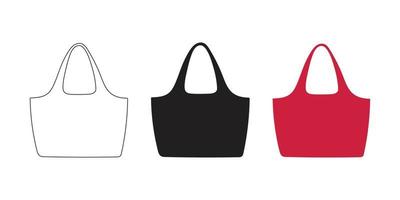
1. Understanding Grainlines
Definition
Grainline: The grainline is an arrow or line marked on a pattern piece that indicates the direction of the fabric's warp (lengthwise threads) or weft (crosswise threads).
Types of Grainlines
Lengthwise Grain (Warp): Runs parallel to the selvage (the finished edge of the fabric). It has the least stretch and provides stability.
Crosswise Grain (Weft): Runs perpendicular to the selvage. It has a bit more stretch than the lengthwise grain.
Bias Grain: Runs at a 45-degree angle to the lengthwise and crosswise grains. It offers the most stretch and is often used for draping and curves.
Importance of Grainlines
Structural Integrity: Ensures that the fabric pieces maintain their shape and structure.
Consistency: Maintains uniformity in the appearance and performance of the fabric.
Fit and Drape: Affects the way the handbag hangs and moves.
Placing Grainlines
Alignment: Align the grainline on the pattern piece with the lengthwise grain (parallel to the selvage) unless otherwise specified.
Checking: Double-check the alignment to avoid skewed or distorted pieces.
2. Essential Markings
Notches
Purpose: Notches are small cuts or marks on the edge of pattern pieces. They help match seams and ensure accurate assembly.
Types: Single, double, or triple notches indicate different seam points and can denote the front, back, or side of a piece.
Placement: Mark notches at crucial points like seam allowances, darts, and pocket placements.
Darts and Pleats
Darts: Indicate shaping points on the pattern. They are typically used to create volume or fit.
Pleats: Fold lines that add decorative or functional fullness. Mark the start and end points, as well as fold lines.
Seam Allowances
Definition: The area between the stitching line and the edge of the fabric.
Marking: Clearly indicate seam allowances on all pattern pieces. Standard allowances range from 1/4 to 1/2 inch.
Fold Lines
Purpose: Indicates where the fabric should be folded.
Marking: Draw a dashed line to denote fold lines. Clearly label them to avoid confusion.
Placement Lines
Pockets and Trims: Lines or shapes that indicate where pockets, trims, or other elements should be placed.
Interfacing: Mark areas where interfacing should be applied for extra support.
Grainline Arrows
Arrow Direction: Draw a straight line with arrows at both ends to indicate the direction of the grainline.
Labeling: Clearly label the grainline to avoid any misinterpretation during cutting.
Balance Marks
Definition: Small marks or symbols that ensure pieces align correctly during assembly.
Usage: Commonly used for aligning complex shapes or curves.
Button and Hole Markings
Buttons: Mark the position of buttons with a small X or circle.
Buttonholes: Indicate the length and position of buttonholes with lines or rectangles.
3. Applying Grainlines and Markings
Drafting Patterns
Incorporating Grainlines: Draw grainlines on all pattern pieces. Ensure they are parallel to the intended grain direction.
Adding Markings: Include all necessary notches, darts, pleats, seam allowances, and other markings.
Cutting Fabric
Aligning Grainlines: Lay the pattern pieces on the fabric, ensuring the grainlines are aligned with the fabric's grain.
Transferring Markings: Use fabric markers, chalk, or tailor�s tacks to transfer markings from the pattern to the fabric. Avoid permanent markers that may stain the fabric.
Assembly
Matching Notches: Use notches and other markings to match pieces accurately during sewing.
Following Lines: Sew along marked lines for darts, pleats, and other features. This ensures precise construction.
4. Common Issues and Solutions
Misaligned Grainlines
Issue: Skewed or misaligned grainlines can cause distortion and affect the fit and drape.
Solution: Double-check alignment before cutting. Re-align and re-cut if necessary.
Faded Markings
Issue: Markings that fade or disappear during handling or sewing.
Solution: Use marking tools suitable for the fabric type. Re-mark as needed during assembly.
Inaccurate Seam Allowances
Issue: Incorrect seam allowances can lead to fitting issues and affect the final product.
Solution: Carefully measure and mark seam allowances. Use a seam gauge for precision.
Conclusion
Grainlines and markings are vital for the accurate construction of women's handbags. They ensure that each piece is cut and assembled correctly, maintaining the design's integrity and functionality. By paying attention to grainlines and meticulously adding necessary markings, designers can achieve high-quality, well-constructed handbags that meet their design vision and customer expectations. Properly aligned grainlines and accurate markings contribute significantly to the overall success of handbag production.